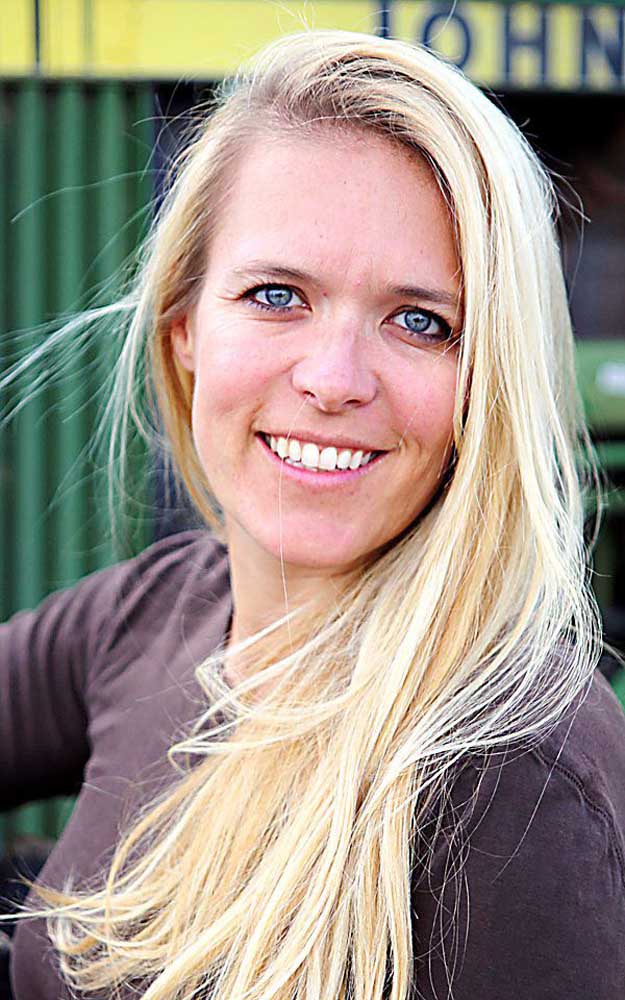Farmer’s Fate: Time balls and New Year’s
Published 11:00 am Saturday, January 25, 2025

- Brianna Walker
Sitting on our living room floor, dressed in pajamas, feeding bummer lambs and watching the countdown to the ball dropping on TV — that’s how we have celebrated New Year’s Eve the last couple of years.
Trending
This year we decided to make it memorable. We lambed most of our sheep in November and December, and our two bottle babies were big enough for someone else to feed them. So we rinsed out our lamb bottles and hit the airport to watch that ball drop in person.
Because we “world-school,” as my husband calls it, the kids got more than just confetti and thunderstorms — they got to learn about time balls.
Time-telling began in the 1300s when the church bells of Milan began ringing out the hours, ringing once at 1 a.m. and culminating in 24 chimes at midnight. It was the first time church bells had been used to announce time regularly.
Trending
The bells tolled hourly, but it wasn’t until the 1700s that the minute hand began to be used. It wasn’t until John Harrison, the famous clock-maker, developed a sufficiently accurate chronometer in 1761, allowing sailors to determine longitude, that people began needing precise ways to tell time.
In the early 19th century Robert Wauchope, a Royal Navy captain, had an idea: a time ball. A large, highly visible ball could be used as a signaling device in the harbor. At a specific moment the ball would drop to indicate the exact time, and sailors could see it through their telescopes and set their chronometers precisely.
In 1829, the Admiralty set up the world’s first time ball in a harbor in England. It worked so well, they set up a second in Greenwich. The ball would be dropped every day at 1 p.m. At 12:55 p.m., the red wood-and-leather ball was raised halfway up a 15-foot mast atop the building; at 12:58 it went to the top; and on the hour the ball began to drop, the start of its downward motion signaling exactly 1 p.m.
The United States Naval Observatory began dropping a noon time ball in 1845 and kept it up until until 1936.
In 1904 the New York Times moved into what later was christened “Times Square” after its famous tenant. To celebrate the move, Adolph S. Ochs, the Times’ publisher, set the skies above Manhattan ablaze with a midnight fireworks show launched from the roof of his newspaper’s 25-story headquarters — but the hot ash that rained down upon bystanders concerned New York City officials so much that they banned pyrotechnics in 1907.
Ochs needed to find something new to celebrate the year’s finale. He found his inspiration in the Western Union Building’s time ball. He put his own spin on an old device. Revelers on Dec. 31, 1907, would have seen a dazzling orb made of wood and iron and illuminated with 100 electric bulbs. The workers would have used ropes and pulleys to lower the 700-pound ball down the flagpole. When the ball reached the bottom, the number 1908 lit up on the skyscraper’s parapet to signal the arrival of the new year. Today, the job of lowering the 6-ton sparkling orb is computerized and timed to an atomic clock. Even though it isn’t a true time ball, it was interesting to see it and learn about it’s history.
Too soon, however, our New York-style pizza was gone, and in its place were large drops of rain. That rain quickly turned into a lightning storm and, at the first clap of thunder, my youngest and I both ducked. The thunder echoing between the skyscrapers sounds a bit different than it does in the wide-open spaces of Eastern Oregon. By 10 o’clock we were cold, tired and drenched. By 11 o’clock we were tucked into our hotel room on Times Square — wearing pajamas, eating microwave popcorn, and watching the ball drop on TV, just like every other year — only without bummer lambs.





